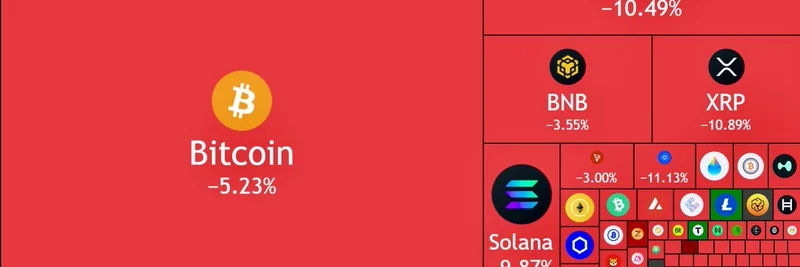In the fast-paced world of cryptocurrency, market dips can feel like the end of the world, but history shows they're often just bumps on the road to new highs. A recent tweet from @StarPlatinumSOL perfectly captures this by listing some of the biggest crypto crashes and how long it took for the market to bounce back. As someone who's seen plenty of ups and downs in the blockchain space, I thought it'd be helpful to dive deeper into this, especially with the fresh wound of the October 2025 flash crash. Let's break it down, explain the jargon, and see what it means for meme token enthusiasts.
A Look Back at Major Crypto Crashes
Crypto markets are no strangers to volatility, and @StarPlatinumSOL's thread reminds us of that. Here's a rundown of the key events mentioned, with a bit more context on what caused them and the recovery paths.
Mt. Gox Hack (2014)
This was one of the earliest gut punches for Bitcoin holders. The exchange lost 850,000 BTC—worth about $460 million at the time—due to a hack. Bitcoin's price tanked from around $1,100 to $360, a whopping 68% drop. It took roughly three years for BTC to hit new all-time highs in 2017. Lesson here? Security matters, and centralized exchanges can be risky spots.
The 2018 Crypto Winter
After the 2017 bull run, the market cap plummeted from $813 billion to $111 billion, erasing $700 billion. Bitcoin slid from $19,500 to $3,200 (an 84% loss). Regulatory crackdowns, ICO busts, and overhyping were the culprits. Recovery to previous highs took about three years, until late 2020. This era taught us that bubbles burst, but adoption keeps growing.
COVID-19 Crash (March 2020)
The pandemic hit everything hard, and crypto was no exception. Bitcoin dropped nearly 50% in days amid global panic selling. But here's the silver lining: It recovered to pre-crash levels in just six months and set new records by December 2020. Quick rebounds like this show how resilient crypto can be when broader economies stabilize.
Terra/UST Implosion (May 2022)
The algorithmic stablecoin UST lost its peg, wiping out $45-50 billion from Terra's ecosystem alone. This accelerated the 2022 bear market, with Bitcoin bottoming out in November. Full recovery to cycle highs took about 22 months, until March 2024. It highlighted the dangers of untested DeFi mechanisms.
FTX Collapse (November 2022)
Sam Bankman-Fried's empire crumbling erased $180 billion in market cap over 11 days. Bitcoin fell from $21,000 to $15,600 (26% drop), but bounced back to pre-FTX levels in two months, with new highs by March 2024. Fraud and poor risk management were at play, reinforcing the need for transparency.
The October 2025 Flash Crash: Tariffs and Turmoil
Fast forward to now, and we're dealing with the latest shake-up on October 10-11, 2025. According to reports from Forbes and CoinDesk, President Trump's announcement of 100% tariffs on Chinese imports sparked a massive sell-off. The crypto market lost around $350-560 billion in cap, with $16-19 billion in liquidations—mostly longs getting wrecked.
Bitcoin dipped from $121,700 to $105,900 (12-13% down) before partial recovery to $114,700. Ethereum fell over 10%, Solana about 9.87%, and XRP around 10.89%. Even stablecoins like USDe briefly depegged, as noted by Bloomberg. This wasn't just a crypto thing; stocks and commodities felt the heat too, thanks to escalating trade war fears.
What made it worse? Overleveraged positions on exchanges like Binance and Bybit amplified the cascade. It's being called the largest liquidation event ever, surpassing even COVID or FTX.
How Did Meme Tokens Fare?
Meme coins, being the wild childs of crypto, often amplify market moves. In this dip, popular ones like Dogecoin (DOGE), Shiba Inu (SHIB), and Pepe (PEPE) dropped over 5-15%, according to The Coin Republic. Solana-based memes, which @StarPlatinumSOL might be nodding to given their handle, saw even steeper falls due to the chain's high-speed trading amplifying volatility.
But memes are resilient too. They thrive on community hype and quick rebounds. For instance, during past crashes, DOGE and SHIB have recovered faster than blue-chips once sentiment flips. If you're into Solana memes like YEET (where @StarPlatinumSOL is an ambassador), this could be a buying opportunity—but always DYOR and avoid leverage.
There's also chatter about a separate BNB Chain meme coin meltdown earlier in October, as per Bitget, where whales and liquidity issues tanked projects. It shows how interconnected these ecosystems are.
Recovery Timelines and What to Watch
Looking at history, recoveries vary: 2-6 months for quick shocks like COVID or FTX, up to 3 years for deeper bears like 2018. Analysts from XT.com suggest a V-shaped rally if tariffs don't escalate further, with Bitcoin potentially eyeing $120,000-$150,000. Keep an eye on Fed meetings, ETF inflows, and geopolitical news.
For meme token holders, focus on projects with strong communities and real utility. Crashes weed out the weak, leaving room for the next big thing.
In the end, crypto's story is one of survival and growth. As @StarPlatinumSOL points out, we've been here before—and come out stronger. If you're building in blockchain, use these dips to learn and position yourself better. Stay tuned to Meme Insider for more updates on how these events shape the meme token landscape.


